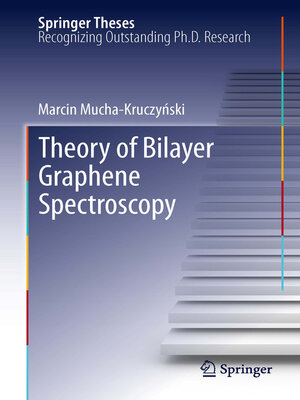
Sign up to save your library
With an OverDrive account, you can save your favorite libraries for at-a-glance information about availability. Find out more about OverDrive accounts.
Find this title in Libby, the library reading app by OverDrive.



Search for a digital library with this title
Title found at these libraries:
| Library Name | Distance |
|---|---|
| Loading... |
This thesis presents the theory of three key elements of optical spectroscopy of the electronic excitations in bilayer graphene: angle-resolved photoemission spectroscopy (ARPES), visible range Raman spectroscopy, and far-infrared (FIR) magneto-spectroscopy. Bilayer graphene (BLG) is an atomic two-dimensional crystal consisting of two honeycomb monolayers of carbon, arranged according to Bernal stacking. The unperturbed BLG has a unique band structure, which features chiral states of electrons with a characteristic Berry phase of 2$\pi$, and it has versatile properties which can be controlled by an externally applied transverse electric field and strain. It is shown in this work how ARPES of BLG can be used to obtain direct information about the chirality of electron states in the crystal. The author goes on to describe the influence of the interlayer asymmetry, which opens a gap in BLG, on ARPES and on FIR spectra in a strong magnetic field. Finally, he presents a comprehensive theory of inelastic Raman scattering resulting in the electron-hole excitations in bilayer graphene, at zero and quantizing magnetic fields. This predicts their polarization properties and peculiar selection rules in terms of the inter-Landau-level transitions.







